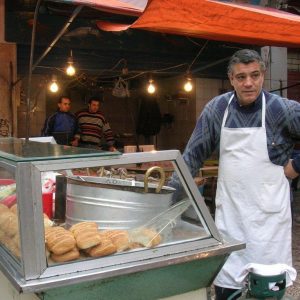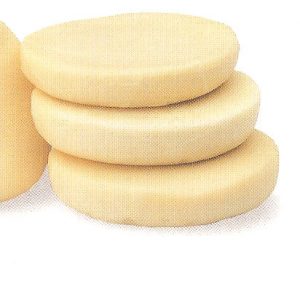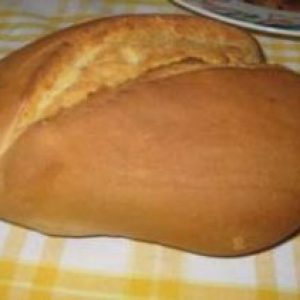
Introduction to vastedda
What is a Vastedda?
The vastedda, guastedda or guastella can all refer to the popular sandwich made exclusively in Palermo, involving a soft, fresh cheese, plain round bread or a lard bread stuffed with cheese, salami and sambuco (elderberry flowers).
What Is in a Word…
The word guastedda could derive from the Greek and Latin gastra , later changed to guastada (meaning carafe in Italian), guastadetta and guastidduzza (a rounded vessel, pot or vase to hold foods or beverages, much like a muffoletta to hold food). Another assumption, with much debate over it and open to discussion, is that it is derived from Hamitic, a language spoken by the Berbers. The words bastil or pastil referred to a food preparation indigenous to the Mediterranean Basin and prepared by some of the populations living in the area surrounding the Black Sea. The pastil or bastil , also known as pastille, bastilla or bsteeya (those words are pronounced all the same: pasti-a), is prepared by northern and eastern African populations, where the Semite-Hamitic language is spoken.
The pastil is a pie made with a few layers of paper-thin dough similar to a strudel or phyllo dough and stuffed with an elaborate creamy and boneless chicken filling, originally made with squabs and enriched with raisins, pine nuts, cinnamon and honey. These pies, similar to the empanadas, impanate, schiacciate or other baked specialties, were cooked for religious celebrations, festivals and on special occasions long before the Romans dominated the Mediterranean Sea. When the Phoenicians from Canaan, the modern regions known as Syria, Lebanon and Israel, colonized and founded Carthage around 800 BC, it is assumed that they introduced this pie in all the lands that they inhabited.
At the present time, the pastelis is still cooked in Syria, and it is a popular pie and a local specialty. The Jewish population living in the area known as Israel also prepared this dish that could be cooked in advance and eaten for the Shabbats. Between the VIII and VII century BC when the Jewish Diaspora took place, this specialty was spread by the Jewish people all over the known world; each city, village or land adapted it to their own taste and to the available local provisions. The name morphed with time and bastil, or pastille, was Latinized into pastellus, gastellus and Wastellus and, in later days, into guastelle or vasteddi. This specialty, eaten from prehistoric to modern times, reached all over the world.
The pastille was served to Richard I the Lionheart, and today, the meat pie, a distant cousin of the pastille, has become an English delicacy. The French and the Canadian stuff it with pork, beef and potatoes and changed the name to tourtiere or tortiere.
The Vastedde in Palermo
In Palermo, the vastedda or pane ca mevusa is a sandwich stuffed with boiled spleen, lungs and other organ meats. It is fried in lard and served either with a slice of lemon or with a chunk of ricotta and/or flakes of Caciocavallo cheese. The bread used for the vastedda is a small muffoletta, a round three-and–a-half-inch roll kneaded with additional water to give a spongy and soft inside, easy to split in half, making it very suitable for sandwiches. The word muffoletta is derived from the Latin muffula, meaning “glove or small sack”. In 1906, a Sicilian, Salvatore Lupo, at the Central Grocery in New Orleans, Louisiana, introduced and offered the muffoletta for sale, stuffed with cold cuts, cheeses and giardiniera in olive oil. His signature sandwich became a New Orleans tradition.
The vastedda, guastedda, or pane ca mevusa, bread with spleen, is part of the traditional street food sold in Palermo. Originally, those sandwiches were sold from small kiosks, the size of a telephone booth, where the guastella were made by sautéing the lard and spleen on top of a primitive charcoal stove. Today, modern eateries called focaccerie serve the guastelle and other specialties like chickpea fritters (panelle), potato croquettes, rice balls (arancine)and flat bread with a savory sauce (sfincione) in fancy settings, restaurant style. It may take a little daring to try the guastedda, but once you eat this delicacy, you will become enthusiastically addicted to this special sandwich.
The Gefilteh Miltz
The origin of the guastella has been disputed by many scholars who give merit to the Jewish for making it popular in Sicily when some of them moved to the island around the year 586 BC after being driven out of Judea by the Babylonians. The gefilteh miltz, a traditional dish made of spleen stuffed with bread, onions, eggs and cooked in schmaltz, which is rendered chicken fat, is somewhat similar to the vastedda. In fact, the guastedda is boiled spleen cooked in lard instead of schmaltz, stuffed in bread and covered with cheese and ricotta. There are some similarities between gefilteh Miltz and guastedda, so this interpretation could be acceptable. A different theory is that the Greeks living in Sicily, who were avid consumers of those special varieties of meats, popularized the guastedda.
Perhaps the most realistic theory is that it was eaten by the islanders because it was an inexpensive food, rich with proteins and other nutrients. Since ancient times, animal trimmings have been considered a delicacy, an aphrodisiac or nourishment with magic powers. The innards, like tongue, sweetbreads, spleen, kidneys, tripe, liver, lungs, heart and other organs are used even in present times, and several are sought-after specialties preferred by gourmets. The intestines of pork are used as casing for sausages and were used in making hot dogs until the end of the fifties.
In Scotland, haggis refers to intestines stuffed with spleen, liver, lungs, heart, oatmeal and suet.
The Greeks add to this, stuffing the kidneys when making kokoretsi.
The Romans cooked these varieties of meat and served them in their lavish Lucullian banquets.
Liverwurst is a tasty liver sausage popular in Germany and in the U.S.A.
Chopped liver and even tongue sandwiches are favorites in Jewish cuisine.
The French pate de foie gras is ground, seasoned spread of goose liver used as an appetizer and famous all over the world.
Kidney pie is a very famous English dish.
The interior of fish like the haggamuggie is a specialty made in the Shetland Islands, consisting of the stomach of a large fish stuffed with fish liver.
Caviar, fish roe, is the choice hors d’oeuvre, served with champagne in lavish feasts. Similar specialties are made in every cooking style in the world.
Vastedde in the Provinces of Palermo, Trapani and Agrigento
In the valley of Belice, a cheese is exclusively produced and called vastedda . In this valley where the provinces of Palermo, Trapani and Agrigento border each other, the sheep produce flavorsome milk because the region is abundant with field for them to pasture, the soil is rich with minerals and water is plentiful. In fact, in this area, two rivers called Left Belice River and Right Belice River converge into one to flow into the Mediterranean Sea near Selinunte. Only in the valley of Belice is this whole sheep’s milk cheese produced, hence it is called vastedda della Valle di Belice. Because it is processed differently and in the old tradition, it can be produced only in the few hottest months of the year and in small quantities.
The vastedda della Valle di Belice has to be consumed within a week. It is a fresh cheese, lightly acidulated with a delicate and refreshing taste, and because it is produced in limited quantity, it is pursued by the gourmets.

The Other “Vastedde”
Bread called vastedde, vastidduni or guastella is baked in every Sicilian province and, from town to town, it has a different flavor and texture. In the province of Agrigento, round breads made with whole-wheat flour and weighing about two pounds are called vastidduni or guastidduni, a big vastedda .

In the province of Enna, the vastedde is also made with whole-wheat flour, but the different altitude, type of grain and baking technique make the Ennese vastidduni a hearty bread that won’t become stale for at least a week. In Troina, a small town in the province of Enna, the vastedda with sammucu, elderberry flowers, is made with dough containing flour, lard and eggs, stuffed with fresh cheese, pork and affettati (cold cuts). In Syracuse, the combination of whole-wheat flour and the local soft-grain flour produces lighter bread that, when it comes out of the oven, is drizzled—not doused—with the local fresh olive oil and accompanied by a glass of Avola wine. It can be a complete meal. In Trapani, a large variety of breads are produced using the wheat called Timilia, which grows in this region. The vastidduni is a round bread with a hard, dark brown crust and a golden inside, the muddica. In Castelvetrano, a large town in the province of Trapani, the vastidduni is also called u pani niuru.
